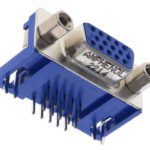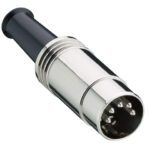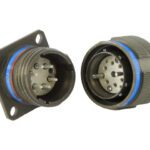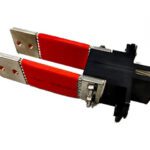What is Hyperboloid Contact Technology?
Meet the Connector: Hyperboloid Contact Technology
The hyperboloid contact was invented in 1956 by Francois Robert Bonhomme for railway applications. Connections for lighting and ventilation in train cars were not secure due to the high amount of shock and vibration, which caused frequent interruptions.
In the 1960s, as the technology advanced and was patented, companies outside of France expanded its use for military, aerospace, and other markets and applications affected by shock and vibration. High-speed signals allowed its use in helicopters and other fighting vehicles that required signal interruption of less than a microsecond, and eventually less than a nanosecond, even as vibration increased, explained Giuseppe Lancella, commercial director for the connector business unit at Smiths Interconnect. This required multiple connection points along the surface of the pin. The design evolved into a wire cage in a hyperboloid shape that wraps around the pin when the connection is made.
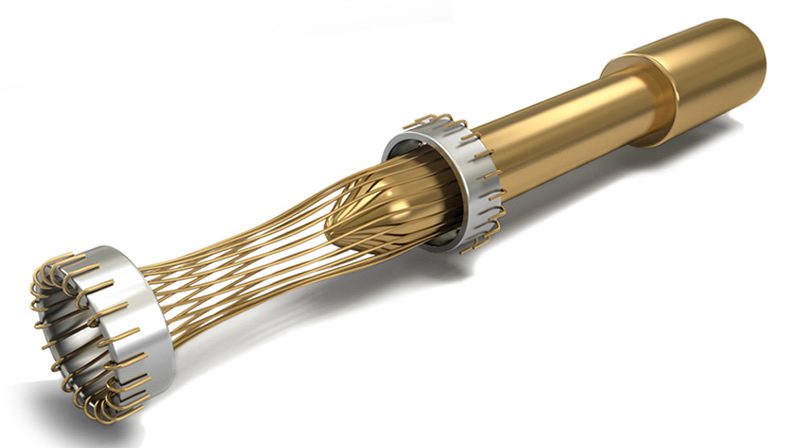
Smiths Interconnect’s Hypertac hyperboloid is the original contact technology for use in demanding environments where reliability and safety are critical. The shape of the contact sleeve is formed by hyperbolically arranged contact wires, which align themselves elastically as contact lines around the pin, providing multiple linear contact paths.
Design Notes for Hyperboloid Contacts
Low insertion force – This is an important factor in applications that require high pin counts, or when the pins are larger in size. Low insertion force prevents excessive wear and extends the life of the connector, particularly in applications requiring high mating cycles. With improvements, hyperboloid technology made 100,000 mating cycles without degradation or increased current resistance of the contact a reality.
Smaller connector design – Higher density connectors require greater force to mate the contacts. Because hyperboloid contacts are smaller in diameter and have a lower mating force, the force needed to engage the connector is significantly reduced, said Paul Gurrisi, engineering manager at QA Technology Company.
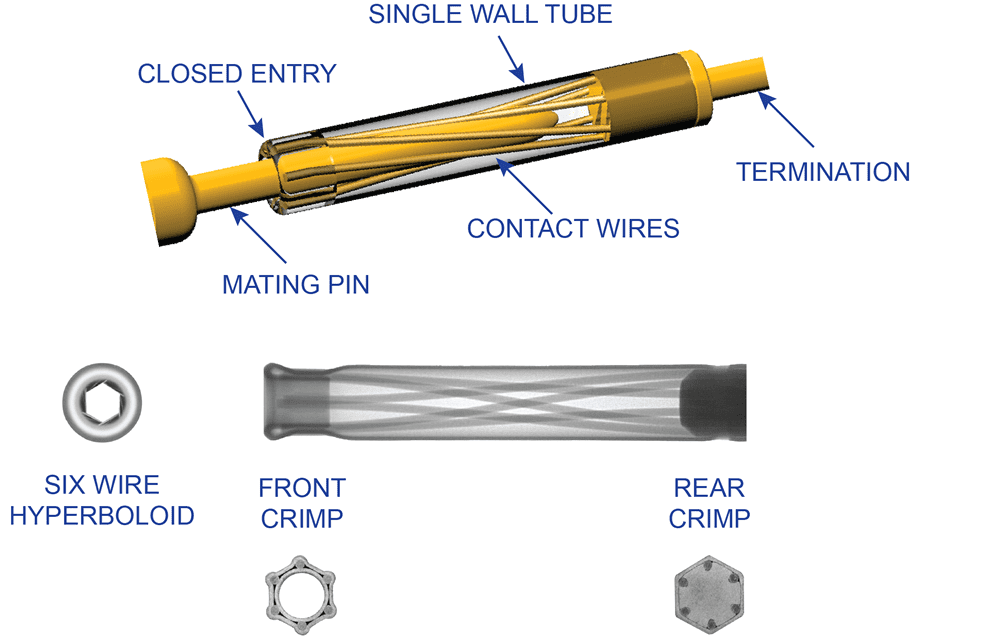
Design model and X-ray of QA Technology’s integraMate ICS series. QA manufactures and supplies hyperboloid contacts to the companies that make connectors. Its products have a lower mating force and smaller diameter compared to other contacts on the market.
Fewer connectors needed – Hyperboloid technology allows for a greater number of contacts on each connector, so fewer connectors are needed overall. “Our design approach offers a smaller outside diameter for a given pin size and closer center spacing. This allows higher pin counts in the same given area,” said Jeff Brown, product design engineer at QA Technology.
Longer time in the field – Hyperboloid contacts can remain in use longer than stamped contacts, said Lancella, which is a significant advantage in, for example, medical devices. Hyperboloid contacts are rated for 100,000 cycles while common medical connectors are rated for about 5,000 cycles. This keeps equipment running longer without repairs or replacement, saving money over the life of the device.
Resistance to fretting – Micro vibration can wear out the gold plating on stamped or screw machine contacts. Hyperboloid contacts have a line of contact on each of the individual wires without a lot of force, so they are less susceptible to fretting wear, said Jeff Smith, director of global sales at QA Technology.
Customization – The pin diameter, the number of wires, and the diameter of the wire can be increased or decreased depending on the current rating needed. Lancella explained that the inclination of the wire can be adjusted to balance insertion force and retention of the contact, depending on what is required for the application. (A sharper wire angle increases insertion force, but also improves retention.) Selective plating can be used to lower cost.
Prototyping – Early in development, small quantities of contacts can be economically produced, compared to stamped contacts that require tooling.
Markets/Applications for Hyperboloid Contacts
High reliability contacts for MIL/Aero (space), Transportation, Medical, Test & Measurement connectors.
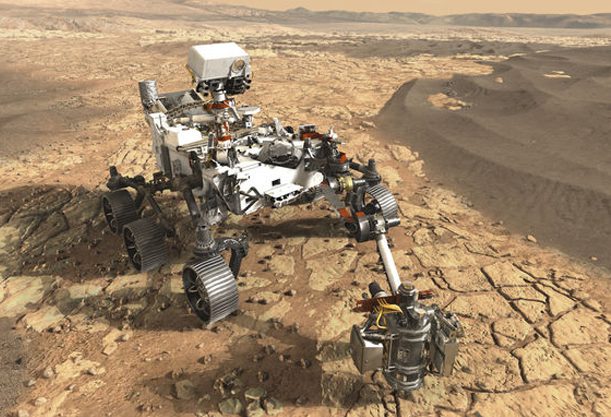
The K2 series of cPCI 2 mm connectors is based on Smiths Interconnect’s unique Hypertac hyperboloid contact technology, renowned for its immunity to shock, vibration, and fretting.
Suppliers
IEH Corporation, QA Technology Company Inc., Smiths Interconnect
Like this article? Check out our other Meet the Connector, Harsh Environment, and our Military/Aerospace Industry Page, and our 2022 and 2023 Article Archive.
Subscribe to our weekly e-newsletters, follow us on LinkedIn, Twitter, and Facebook, and check out our eBook archives for more applicable, expert-informed connectivity content.
- Sealing Success: Overmolding for More Secure Connections - April 23, 2024
- Medical Cable Assemblies Product Roundup - April 23, 2024
- Mezzanine Connectors Product Roundup - April 16, 2024
